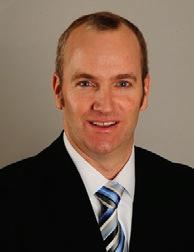Library expansion cost estimate ratchets up



The Williston Police Department has a proactive new tactic to disrupt rampant retail theft in Taft Corners.
In a first-of-its-kind collaboration last Friday, two police officers joined forces with four sheriff’s deputies and coordinated with several store managers in an undercover sting operation that netted eight arrests.
The officers and deputies used the department’s unmarked SUV, wore civilian clothes and,
in some cases, used remote video cameras and tips from employees to catch thieves in the act at several stores, including Walmart, Home Depot and Plato’s Closet.
“We had deputies and officers throughout the entire business district,” Chittenden Sheriff’s Deputy Paul McManus said. “It worked out very well.”
Seven of the eight arrestees were issued citations to appear in court. One, a first-time

offender, was referred to the local restorative justice center.
McManus said future coordinated undercover operations, possibly involving officers from other municipalities, are likely, and he hopes they act as a deterrent to would-be thieves.
“It was a success, and I think we will do them in other places, and in Williston again,” McManus said.
JOIN US FOR BREAKFAST,
BY JASON STARR Observer staff
Cost projections on a plan to double the size of the Dorothy Alling Memorial Library are on the rise, but a new study reveals the project could garner significant philanthropic support.
The Williston Selectboard commissioned CPG Enterprises of Burlington to interview potential local donors and gauge their interest in helping fund the library expansion. The resulting report predicts that several donors would give sums ranging from $1,000 to $250,000, which would amount to between $1.5 million and $2 million in charitable support for the project.
That is shy of the town’s fundraising goal of $3.5 million.
“We were not able to identify anyone we would call a ‘lead gift’
a $500,000 to $1 million gift did not materialize,” said CPG Associate Maeve McBride.
“We don’t want to sneak this through on the voters.”
Mike Isham Williston Selectboard
If the town were able to raise $1.5 million in donations, that would leave $13.5 million for taxpayers to support. The selectboard is considering seeking voter approval to borrow that amount. John Hemmelgarn, a Williston architect who designed the proposed expansion, said Tuesday that his $13.5 million project cost




Brook Memory Care receives $125K respite grant
Cathedral Square has been awarded a grant for $125,000 from the Alzheimer’s Association Center for Dementia Respite Innovation to enhance the quality and availability of dementia-specific respite care for people living with dementia and their caregivers in Chittenden County.
The funds will be used to pilot a new concept of providing respite care in Cathedral Square’s Memory Care at Allen Brook community in Williston, to help caregivers get a break or respite from caring for their loved ones. Cathedral Square is one of 41 recipients chosen to receive grant funding from more than 200 applicants across the country.
“Family caregivers are the backbone of dementia care, often providing round-the-clock support with little relief,” said Cathedral Square CEO Kim Fitzgerald. “This funding will allow us to create a sustainable model that not only serves our local families but can be replicated by other communities facing similar challenges. We’re committed to ensuring no caregiver has to face this journey

alone.”
In Vermont, more than 13,000 residents over 65 have Alzheimer’s disease, and over 20,000 family members provide unpaid dementia care. With private memory care costing upwards of $15,000 per month and some individuals living in hospitals for months due to lack of alternatives, this respite program will provide relief for overwhelmed caregivers while ensuring professional, compassionate care in a secure environment.
In conjunction with the grant, Cathedral Square will also receive online training and ongoing technical assistance to ensure respite services are dementia-capable and to support sustainability.
“We congratulate Cathedral Square on their grant and look forward to working with their team to help enhance respite care services for local dementia caregivers,” said Sam Fazio, vice president of care and support programs and research at the Alzheimer’s Association.
“We intend to gain insights from each respite program we fund, ultimately developing a catalog of programs, tools and resources that will be easily accessible to interested caregivers and care providers.”
The Alzheimer’s Association created the Center for Dementia Respite Innovation in 2024 after receiving a $25 million grant from the Administration for Community Living, a division of the U.S. Department of Health and Human Services. Over the next four years, it will provide $25 million in grant funding to local respite providers and organizations to enhance the quality and availability of respite care nationwide.
Mission: Lifeline is the American Heart Association’s national initiative to improve outcomes for patients with highrisk, time-sensitive conditions.
The Williston Fire Department was awarded in June with the American Heart Association’s Mission: Lifeline EMS Gold Achievement Award in recognition of excellence in cardiac care.
The American Heart Association honors first-responder agencies throughout the country with this recognition for consistently following guidelines and offering treatment during 911 calls and hospital transports.
“Receiving this award is a testament to the dedication and professionalism of our EMS personnel,” said Williston Lieutenant/Paramedic Tony Simanskas. “When seconds count, our team is ready to deliver life-saving interventions that give our community members the best possible chance at survival and recovery.”
The American Red Cross will host a blood drive Thursday, July 17 at the Williston Fire Station at 645 Talcott Road. The blood drive will take place from 9 a.m.-1:30 p.m.
To schedule an appointment, call 1-800-RED CROSS or visit www.redcrossblood.org and enter: WFD.
Food 4 Farmers is hosting its fourth annual Harvest Festival on Sunday, Aug. 3 from 1-5 p.m. at Bread & Butter Farm in Shelburne. The event features live music from Sonido Mal Maiz plus Latin food, family games and coffee and spirits tastings.
Ticket sales and a silent auction benefit Food 4 Farmers, a Vermont-based nonprofit whose mission is to help address periods of food scarcity that affect small-scale coffee farming communities each year.
Purchase tickets at: https:// secure.givelively.org/event/ food-4-farmers/food-4-farmers-4th-annual-harvest-festival
• Norman Burrington bought a condominium on Chelsea Place from Vicki Porter for $595,000.
• Jaileen Morel-Kunkardt bought a mobile home on Mountain View Road from Scott Stevens for $355,000.
• Anthony Orgain bought a home on 13 acres on Oak Hill Road from Michael Del Brocco for $1.39 million.
• David Conant bought 32 acres of timberland on the south side of Interstate 89 from Kim Conant for $125,000.
• Denise Beers bought a condominium on Kadence Circle from Northridge Williston LLC for $550,000.
• Leevi Betancourt bought a home on Hickory Hill Road from Scott Batdorf for $480,000.
• Mike Dowling bought a condominium on Commons Road from William Hanley for $477,500.
• Matthew Hughart bought a home on Maidstone Lane from the William Gray Ricker IV Trust for $625,000.






• Lindsay Jehl bought a home on 2 acres on Nob Hill Road from Susan Powers for $166,206.
• Seth Wilens bought a home on South Brownell Road from Jean Rodriguez for $416,000.
• HWS Ventures bought 3 acres of commercial property on Krupp Drive from Bartlett Properties LLC for $5 million.
• Kathleen Lynch bought a home on Eden Lane from Snyder Williston Properties LLC for $619,299.
• The Christopher J. Conant Revocable Trust bought a condominium on Southview Lane from Corey Walker for $389,000.

‘We
BY JASON STARR Observer staff
John W. Danforth Company has quietly had a Vermont office in the Champlain Islands for years, building business relationships with such stalwarts as GlobalFoundries, Beta Technologies, Stowe Mountain Resort and Ben & Jerry’s.
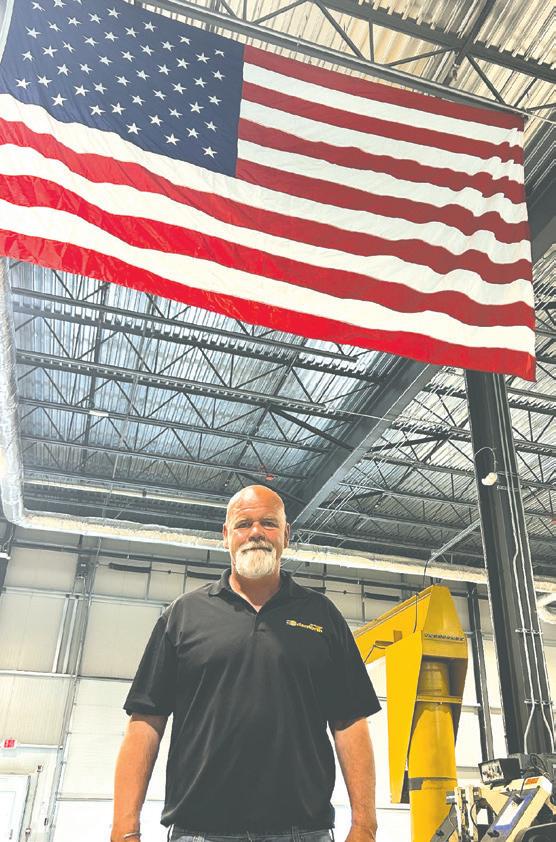
In June, it moved into the heart of Chittenden County, opening a newly constructed office and fabrication shop on Williston Road — its sixth location in the Northeast.
An employee-owned company founded 140 years ago in Buffalo, N.Y., Danforth installs and services piping for heating, air conditioning, ventilation and plumbing as well as food and product manufacturing.
Craig Rexford has led Danforth’s Vermont operations from Grand Isle since 2018, after contracting with the company for work on its installations at Stowe. He said the new offices will spur hiring of about 10 office workers and 30 field workers in both piping and sheet metal.
“We intend to grow quite a bit,” said Rexford, a native of Essex Junction. “We have a lot more space and its brand new. And it’s easy for truckers to get in and out.”
The building was constructed by prolific Williston construction company SD Ireland, with space leased so far to Danforth and Johnstone Supply. Danforth has a 7,600-square-foot, high-ceiling pipe fabrication shop plus 3,000
perfectly with our vision for strategic growth,” Danforth President & COO Patrick W. McParlane said in a news release. “We have an experienced team with a strong understanding of the region.
“The new office will allow us to leverage our expertise and the relationships we have built in the region to create new opportunities for our company, our people and our customers to grow and succeed.”
The company hires union
labor from the United Association of Plumbers and Pipefitters and the Sheet Metal, Air, Rail and Transportation Workers.
“The energy and activity taking place in and around Burlington and the surrounding area, the strong pool of talented workers, including many longterm Danforth employees who live in Vermont, and the geographic proximity to support projects in other areas make this an exciting move for us,” Rexford said.






The American Bookseller Association is asking its members to email members of the Essex Development Review Board and town leadership and urge them to vote down the proposed Amazon warehouse. The board’s vote is scheduled for July 17.
“An Amazon warehouse in Essex would have a significant and negative statewide impact,” the association’s advocacy and public policy director, David Grogan, told its members in an email. “Amazon’s business model is predicated on putting local bookstores and other small businesses out of business through market power and anti-competitive practices. With a distribution hub in Essex, Amazon can offer even faster delivery times across the state, making it harder for all local businesses, regardless of their town, to compete on convenience and price.

“Moreover, as Amazon’s presence grows in Vermont, it will divert consumer spending from local businesses throughout the state to its own platform, reducing revenue for businesses in other towns.”
Vermont Federal Credit Union and Credit Union of Vermont have announced their intent to merge, pending regulatory approval and a vote by the Credit Union of Vermont membership later this year. Vermont Federal Credit Union will emerge as the continuing credit union.
Credit Union of Vermont will continue to operate under its own brand until its operations are integrated into Vermont Federal Credit Union’s. The merger will become legal by year’s end with integration continuing into early 2026, Jean Giard, CEO of Vermont Federal Credit Union, is expected to be the CEO of the combined credit union.
The Vermont Occupational Safety and Health Administration reminds employers and workers — especially in the fields of agriculture, landscaping, construction and

delivery — to prepare and plan to avoid heat-related illness during hot weather.
When possible, modify schedules to avoid peak heat hours (typically midday to early afternoon). Enforce regular rest breaks — at least 10 minutes every two hours in safe, cool zones. Provide cool water on-site and encourage frequent hydration. Train staff to spot early signs of heat stress and act immediately. Report any early symptoms of heat stress, such as dizziness, nausea or extreme fatigue, to a supervisor as soon as possible.
Anyone witnessing signs of heat-related illness should quickly move the affected individual to a cooler environment, provide water and seek medical attention.
For more information, visit labor.vermont.gov/vosha/heat.
Paul Stanford has been appointed to the Vermont Professionals of Color Network Board of Directors. Sanford, a resident of Charlotte, has worked as an executive at The Cigna Group.
For more information about the
organization, visit (https://www.vtpoc. net/).
The Vermont Department of Labor is hosting its annual “Take Me Out To The Job Fair” event at an upcoming Vermont Lake Monsters baseball game.
The job fair is schedule for Wednesday, July 30 from 5-6:35 p.m. at Centennial Field in Burlington. The job fair is free to anyone with a game ticket.
Construction on a 115-room Marriott hotel with a restaurant and rooftop bar broke ground in June in Winooski.
The Sugar House Hotel will be located at 11 Winooski Falls Way and is slated for a summer 2026 opening.
State
The statewide unemployment rate for May was 2.6 percent, the Vermont Department of Labor reported — no change from April.






























Dan Phelan, a Williston hospitality professional who managed The Windjammer Restaurant in South Burlington for 23 years, has taken ownership of Palmer Lane Maple in Jericho.
Founded and operated by Paul and Colleen Palmer, Palmer Lane Maple is widely known for its creemees, maple products and curated gifts. The Palmers will remain involved in the business through this summer to ensure continuity as Phelan’s ownership begins.
“It’s not always the meal people remember, but the feeling, the experience. That’s the common thread I see between The Windjammer and Palmer Lane Maple,” Phelan said in a news release. “Palmer Lane Maple is already a Vermont institution. I’m honored to continue what the Palmers so thoughtfully built, and to carry that forward with care.”
Phelan plans to continue Palmer Lane’s legacy as a local, family-owned business and retain its current product line and customer experience.
“Palmer
Lane Maple is already a Vermont institution. I’m honored to continue what the Palmers so thoughtfully built, and to carry that forward with care.”
Dan Phelan
“We’re incredibly proud of what we’ve built with Palmer Lane Maple” Paul Palmer said, “and are excited to pass the torch to Dan, who shares our dedication to quality and community. This has never just been a business, it’s been a gathering place, a way to connect with our neighbors and bring joy to a small part of their day.”
Palmer Lane Maple is located at 19 Old Pump Road in Jericho.








BY JOE FLYNN AND JULIE MOORE
On July 7, 2023, what began as a typical summer afternoon storm quickly escalated into something far more significant.
That day, heavy rainfall pummeled the Killington and West Bridgewater areas, closing major routes and triggering rockslides. But this was just the opening act of a climate disaster that would reshape how we think about Vermont’s vulnerability to extreme weather.
Over the next 48 hours, up to 9 inches of rain fell across the state. Montpelier received 5.28 inches — more rain than fell during Tropical Storm Irene and the highest recorded rainfall total in 75 years. And numbers across Vermont told a similar, sobering story: 547 high-water marks recorded statewide, 20 of 45 stream gauges showing greater peak flows than during Irene, and 80 landslides scarred the landscape.
The 2023 floods impacted thousands of Vermonters and resulted in hundreds of millions of dollars in
damage and loss in towns, villages, cities, homes, businesses, state offices, farm fields, state parks, and recreational trails. Storm-related damage impacted 64 state bridges, 180 miles of state roads, 409 miles of active railroad, and 149 miles of rail trail — ultimately costing the state $190 million to repair.
And the human cost was even more devastating, as two Vermonters lost their lives.
But here’s the truly alarming part: exactly one year later, on July 10, 2024, Hurricane Beryl’s remnants delivered more deluges. While less widespread than 2023’s disaster, localized damage — in places like Plainfield, Lyndonville and Kirby — was even more severe. Again, bridges and culverts were damaged or destroyed, roads and rails flooded, and communities found themselves cut off from the outside world, ultimately costing tens of millions to repair. And tragically, two additional lives were lost.
Historic storm events in backto-back years isn’t coincidence, it’s the new normal. Climate scientists have long warned that a warming
Williston’s Community Newspaper Since 1985
www.willistonobserver.com
P.O. Box 1401, Williston, VT 05495 | 802-489-5499
ADVERTISING
Rick Cote, Associate Publisher rick@willistonobserver.com 802-373-2136
EDITOR
Jason Starr editor@willistonobserver.com
PRODUCTION & DESIGN
Jan Kenney
jan@willistonobserver.com
PUBLISHER
Susan T. Cote susan@willistonobserver.com
BILLING INQUIRIES
Michael McCaffrey office@willistonobserver.com
Member:
ADVERTISING SPACE DEADLINE
Friday at 5 p.m. for the next Thursday issue rick@willistonobserver.com, 802-373-2136
CLASSIFIED ADS
Deadline is Friday 5 p.m. There is a fee for business, real estate, help wanted and legal ads. Free classifieds must be 25 words or fewer and are printed on a space available basis.
SUBMISSIONS & LETTERS
Deadline is Monday noon for Thursday issue. News/ story tips are welcomed. Letters to the Editor should be 300 words or fewer and include your name, address and a daytime phone number so that we can verify the letter’s author.
The Williston Observer reserves the right to edit or refuse submissions or advertising. Opinions expressed in the paper are those of the writer and do not necessarily reflect the opinion of the paper.
publication of Twin Ponds Publishing LLC

(We) have been quietly revolutionizing how we work together to design, build and maintain infrastructure.
atmosphere holds more moisture, creating conditions for these “atmospheric rivers” that can dump unprecedented amounts of rain in short periods. Vermont is experiencing firsthand what it means to live in an era of climate extremes. The silver lining in this dark cloud is that we’re learning to adapt. Since Tropical Storm Irene 14 years ago, the Agency of Transportation and the Agency of Natural Resources have been quietly revolutionizing how we work together to design, build and maintain infrastructure.
Our teams meet regularly, in part so that we know what to expect of each other, allowing for faster, more effective, more efficient, and
more successful emergency response when disaster strikes. And we are designing with our climate future in mind, installing larger culverts, building bridges that allow for bank-full width flows, and strategically managing debris to prevent catastrophic blockages.
While we can’t simply snap our fingers and become resilient, the investments we have made since 2011 are paying dividends.
The Whitesville Bridge over Twentymile Stream in Cavendish, damaged in Irene, withstood both 2023 and 2024 floods. Sections of Route 131 that were destroyed in Irene held firm during recent flooding. A just-replaced culvert on the Jail Branch in Orange, sized with more extreme weather in mind, passed the 2023 flood waters, while the aged culvert immediately downstream was blown out. This isn’t luck, it’s smart engineering informed by hard-won experience. Climate change isn’t coming to Vermont, it’s already here, and it’s rewriting our weather patterns with real and lasting consequences. More and more Vermonters are recognizing that climate adaptation isn’t a luxury, it’s an economic
necessity.
Vermont has always prided itself on adapting to harsh conditions. Our ancestors built covered bridges and stone foundations that lasted centuries. Today’s challenge is no different. To ensure the infrastructure we are currently building lasts, we must build for the climate we’re inheriting, not the one we’ve lost.
The floods of 2023 and 2024 showed us both our vulnerabilities and our capacity for resilience.
Given the increasing frequency and severity of climate-related events, we can and must prepare for our future, working to reduce risk and minimize future disruptions. Our infrastructure and our communities depend on getting this right.
Together, state engineers, geologists and river experts are taking the steps necessary to reduce future flood damage and help Vermont become more resilient.
Joe Flynn is secretary of the Vermont Agency of Transportation; Julie Moore is secretary of the Vermont Agency of Natural Resources.

Farewell for now
In 1995, Susan Maguire married me and we built a house on Texas Hill Road. You welcomed us as we brought two boys into that home and allowed our roots to grow deep.
Our boys were growing into young men. We were living the dream.
Fast forward, the dreams are shattered.
But there you were. With a warm meal. A banana bread. A coffee at Parkside. A hug or just a breath on the deck. You have been the hand reaching for Marc and me, in the darkness.
Thank you.
Now, it’s time for me to go quietly into the night. Susan has given us the opportunity to start over so, my Jeep is packed for the open road. An adventure to whereabouts unknown is beginning.
How could I leave the people who love me most? It’s time.
For, if I look for it, it won’t be found. But when I see it, I will know.
Marc and I are ok. We are alive and we have each other. We are grateful for you.
Joe Hoeppner Hinesburg
While Verizon and the other cell phone profiteers state that cell phones and towers are safe, their research is decades old and minimal.
There is a great deal of harm, and there is plenty of independent research to demonstrate this. The greatly increased impact from 5G will be even worse.
While the proposal of placing a tower on the Williston Police Department (“Verizon dials in on police roof for cell antennas,” July 3) may be economically beneficial to the town budget to gain rental income, the long-term expenses of cancer, other illnesses and weakened brain health will be astronomically higher.
Our school and town
employees’ health insurance is already bankrupting this town. How much can we afford in taxes and how many people can we afford to lose?
It may be inconvenient not to have cell phone service, but caring for a child or a family member that is brain damaged or has cancer is far more inconvenient.
Before the town agrees to having a cell tower near anyone, shouldn’t they examine the independent research, (not what the companies provide) and prove that it is healthy to do so.
The following are excerpts from some studies.
“Overall results of this review show three types of effects by base station antennas on the health of people: radiofrequency sickness, cancer and changes in biochemical parameters.”
“High exposure to (radiofrequency) produced by mobile phone base stations was associated with delayed fine and gross motor skills, spatial working memory, and attention in school adolescents compared to students who were exposed to low (radiofrequency).”
“The mortality rate has been higher for the residents within an area of 500 meters from the base station. The radiation superposition near the base station has also been observed; the nearer the stronger.”
Janet Smith Williston
The Williston Observer welcomes your letters to the editor.
A few ground rules: We ask that letters run no longer than 300 words. We edit for length, clarity, style, spelling and grammar.
Please include your name, town or city where you live and a daytime phone number (which we won’t print) so we can verify you wrote the letter.
The deadline is Monday at noon for letters to be printed in Thursday’s paper.
Email: editor@willistonobserver.com or mail to Williston Observer, P.O Box 1401, Williston, Vt. 05495
continued from page 1
estimate from 2024 should be revised upward. His new estimate is $15 million.
“I don’t have a lot of data to back that up,” he acknowledged. “I just have a bad feeling that 13.5 (million) isn’t the right number.”
“We need to make plans for the cost of this project going up.”
Town Finance Director Shirley Goodell-Lackey crunched some numbers on the cost to taxpayers of a $13.5 million bond and reported that the debt would cost the owner of a median assessed home ($300,000) an additional $115 on their annual property tax bill.
The selectboard plans to decide in August whether to hold a special election in November for voter approval of a bond sale, or target early 2026.
“I’d like the town to vote on it. Ultimately they need to decide whether they want to take on this debt,” board member Greta D’Agostino said.
While McBride recommended a springtime special election, board member Mike Isham said he prefers to ask voters during Town Meeting Day in March, when there is likely to be greater voter turnout.
“We don’t want to sneak this through on the voters,” Isham said.
• Alternative to traditional AC that will heat your home all winter long
• Qualifies for 0% interest financing
• Can be used in combination with your existing heating system
• Control your ductless heat pump and central heating system by installing an integrated control, and get an additional $600 back
Funding is made possible by your electric

Attorney General Charity Clark has filed a lawsuit against the Trump Administration for freezing an estimated $26 million in federal funding meant for Vermont schools.
Nationwide, $6.8 billion in federal education funding has been frozen.
In the lawsuit, Attorney General Clark along with 23 other states attorneys general argue that the Trump Administration’s funding freeze violates federal funding statutes and regulations authorizing school programs and appropriating funds for them. The lawsuit says the funding freeze violates statutes governing the federal budgeting process, the constitutional separation of powers doctrine, and
the Presentment Clause.
The coalition is asking the court to block any attempts to withhold or delay this funding.
“Once again, the president wishes to unconstitutionally undo appropriations made by Congress,” said Clark. “The president does not have the power to freeze these funds — funds that Vermont schools are counting on. I am going to keep fighting for our Constitution, for Vermont schools and for the future of our country.”
The funding supports six longstanding programs administered by the U.S. Department of Education, including educational programs for children of migratory agricultural workers and English learners; programs
that promote effective classroom instruction, improve school conditions and the use of technology in the classroom;
“The president does not have the power to freeze these funds — funds that Vermont schools are counting on.”
Attorney
General Charity Clark
community learning centers that offer students a broad range of

• Something for Everyone | 3-story townhomes, 2-story paired villas & 1-level carriage homes
• Modern Design | Efficient, innovative homes; main level owner’s suites
• In the Heart of Williston | Access to town bike paths; Close to shopping
• Focus on Fun | Park, pool, and bike paths
FIND THE HOME THAT FITS YOUR NEEDS TODAY!
Townhomes, Paired Villas & Carriage Homes Starting from the upper $500s

3
opportunities for academic and extracurricular enrichment; and adult education and workforce development efforts.
Each year, the Department of Education makes around 25 percent of the funds for these programs available to states on or about July 1 so that state and local educational agencies may plan their budgets for the academic year ahead. However, this year, on June 30, state agencies across the country received a notification announcing that the Department of Education would not be issuing grant award notifications for six formula funding programs.
School districts have approved budgets, developed staffing plans, and signed
contracts to provide educational services under these grants. Now, states find themselves without sufficient funding for these commitments.
Joining Clark in the lawsuit are the states of Arizona, California, Colorado, Connecticut, Delaware, the District of Columbia, Hawaii, Illinois, Maine, Maryland, Massachusetts, Michigan, Minnesota, Nevada, New Jersey, New Mexico, New York, North Carolina, Oregon, Rhode Island, Washington, Wisconsin, Kentucky and Pennsylvania.


After three consecutive years of multimillion-dollar operating deficits, the Howard Center Vermont’s largest provider of mental health care, developmental disability programs and substance use disorder services has announced the elimination of 57 positions and closure or streamlining of some of its programs.
Changes include a reduction of 13 supportive housing beds and closure of day programming at Westview House — a Chittenden County space for adults with mental illness. The organization will also consolidate substance use disorder services in Franklin and Grand Isle counties to Chittenden County.
“Like so many organizations in our community, Howard Center is facing a structural deficit that threatens our ability to serve the community long-term,” said CEO Sandy

McGuire. “This realignment is a difficult but necessary step in our ongoing work to achieve greater financial viability and ensure we remain strong and focused on where we can have the greatest impact for those who need us most.”
Howard Center has about 1,300 employees serving roughly 20,000 Vermonters at 60 locations.
Rising staff health care costs have been a major drain on its budget. Since 2021, health care costs have increased by 100 percent, it said in a news release.
“There will be impacts to our staff and clients,” said Chief Client Services Officer Beth Holden. “We continue working closely with community partners and providers to fill … gaps in services.”
Howard Center is funded by the United Way of Northwest Vermont. Visit www.howardcenter.org for more information.

BY DEBORAH J. BENOIT Special to the Observer
If seeing strawberries at farmers’ markets and roadside stands starts you dreaming about harvesting this sweet juicy fruit in your own back yard, why not give it a try?
A strawberry plant is about 12 inches high and 24 inches wide when mature. They commonly spread through above-ground runners (called stolons) that root and produce new plants.
To grow your own strawberries, you’ll need a sunny location — at least six hours of direct sun daily. Insufficient light can result in slow growth and lack of fruit. If you don’t have a garden spot that will provide full sun, consider growing strawberries in a container that you can put in a suitable place.
For the best results, choose a location with rich, fertile soil that drains well. Adding a layer of mulch to a strawberry bed can help retain moisture, prevent weeds and regulate soil temperature.
A soil test will tell you about your soil’s pH, available nutrients, micronutrients and more. It will also recommend the type of fertilizer that will benefit the plants you’re growing. For more information, see https://go.uvm.edu/soiltest.
There are different types of strawberries to choose from that will produce berries at different times during the growing season. Within those types are numerous varieties. Which you choose will help determine the size, sweetness

and other qualities of the strawberries you grow.
June-bearing varieties send out runners in the spring as daylight hours increase. They bear one large crop each year in June.
Everbearing varieties bear fruit when there are at least 12 hours of daylight, and they continue to do so throughout the season until summer’s end. Day-neutral varieties will produce berries in June, again in July, and once again in August.
The best times to plant strawberries are in the spring/early summer or in the fall. Avoid planting in excessive heat.
Strawberries can be purchased as single plants ready for the garden or in bundles of bare roots. Starter plants can be transplanted into the garden following a period of acclimation. Keep the crown at soil surface level when planting, and water in well. For more information on transferring plants to the garden, see https://go.uvm. edu/starters.
If you purchase bare-root plants, they’ll appear lifeless, but they’re actually dormant. The bundled roots should be separated and soaked in water for about an hour. Remove any dead leaves and plant with the crown level at the soil’s surface in either the garden or in pots. Be sure to water well. Before long, new growth will appear.
If you want to grow stronger, better-producing plants, remove the flowers from June-bearing varieties during the first year. For everbearing and day-neutral varieties, remove all flowers early in the season, but you can let subsequent

For a good crop of ripe, red strawberries, plant them in a location that receives at least six hours of direct sun daily and has rich, fertile soil that drains well.
Adding a layer of mulch to a strawberry bed can help retain moisture, prevent weeds and regulate soil temperature.
PHOTOS COURTESY OF PIXABAY.COM

flowers remain for a late-season harvest. This enables the plants’ energy to be focused on growth rather than fruit production early on.
In the fall, leaves can be mowed or cut back. Mulch well in late fall to protect strawberries’ shallow roots during the winter.


If you find yourself trying to identify a pest or disease affecting your strawberries, or if you have questions about growing them, or home gardening in general, contact the University of Vermont Extension Master Gardeners
Helpline by phone at (802) 6565421 (Thursdays, 9 a.m. to 12 p.m.
from April to October) or online year-round at https://go.uvm.edu/ gardeninghelp.
Deborah J. Benoit is a UVM Extension Master Gardener from North Adams, Mass., who is part of the Bennington County Chapter.















The Williston Wolfpack suffered a 14-4 loss to the Champlain Mariners at WIlliston Central School despite their best efforts, including [clockwise (l to r)]: a Gale Goodenough home run that the team left the dugout to celebrate; Hayden Roberge getting a piece of the ball; Zack Darling’s efforts on the mound; Jarret Muzzy’s throw which nabbed a runner; and Pete Mailloux efforts at bat.





Roughly $26 million in federal funding was abruptly withheld by the Department of Education
BY COREY MCDONALD VTDigger
School districts and adult learning centers across Vermont are beginning to feel the impact of the $26 million in federal funding President Donald Trump’s administration is withholding from the state.
The U.S. Department of Education told state education officials on the evening of June 30 — less than 24 hours before the funds were set to be dispersed — that they would be conducting a review of the grant programs. No timeline was given for when that would be completed.
The funding pause was part of a broader freeze by the Trump administration of more than $6 billion nationwide for after-school and summer programs and

English language instruction.
Six federal grant programs were affected, including Title IIA and Title IIIA grants, which respectively fund professional development for teachers and staff, and support services for English language learners.
In Vermont, the grants for years have helped fund nearly 100 afterschool and summer programs, serving more than 10,000 students, as well as an array of English language programs, according to the office of Sen. Bernie Sanders, I-Vt.
The abrupt pause in funding has left many school districts in limbo. The announcement, which came just days before the Fourth of July holiday, has sent school officials scrambling to realign their budgets without federal funds.
That is likely to be a tough task for some districts. In the Winooski School District, the funding pause has left a roughly $700,000 budget hole for the high-poverty district, according to the district’s director

of finance and operations, Sarah Haven.
The district has primarily used those dollars to fund staff salaries and has signed contracts with its staff through the 2025-26 school year, Haven said.

Because the district is a designated high-poverty district, officials have been able to pool those federal grant dollars together and have primarily tied them to salaries, Haven said.
ones that are hit,” Eppolito said. “And it will be really apparent in Winooski because anything that we cut out is going to affect those kids right away.”
“The hardest thing about what’s happened here is that this decision came after we had done a lot of financial planning, and we’re caught really off guard,” said Michael Eppolito, the director of curriculum and learning with the Winooski School District.
“We don’t really know what the impact is going to be, other than somebody is going to have to pay for it, particularly because most of this money is tied up in positions that we’ve already agreed that we will pay,” he said.
Eppolito said he expects to cut programming that is not vital.
“We need to start looking anywhere we can to trim things that are not essential,” he said. He pointed to a digital program teachers use to support math and English language arts instruction in the classroom.

Haven said she expects leadership to begin developing an action plan in the coming weeks. Any changes to the district’s budget allocations will need board approval.
She anticipates the district will be able to manage the hit this upcoming school year but said harder decisions may need to be made during next year’s budgeting cycle.
“In the long run it is going to impact the students that have the fewest resources or the most vulnerable students — there’s no doubt that they’re going to be the
Other districts took similar hits to their budget. The Essex Westford School District had allocated in its fiscal year 2026 budget more than $400,000 from federal grant funding, according to Mark Holodick, the district’s new superintendent.
“It’s a significant source of funding for us,” he said. “We’ve already had a number of internal meetings. We’re beginning to plan accordingly if these dollars are not released.”
In the Harwood Unified Union District, Superintendent Michael Leichliter said the funding pause is forcing the district to pause professional development programming.
Leichliter said the federal funding pause threatens to exacerbate an already difficult budget climate for school districts in the state.
“We’ve already been in that trim-back mode,” he said. “We’re getting to the point where, in order to provide basic services, it will be challenging to reduce any further.”
Holodick, likewise, said his district over the past two years has cut $10 million from its budget.
“What I don’t want to see is the mindset shift from the expectation being, ‘We are providing an outstanding education to our
students,’ to ‘This is an adequate educational system where we’re getting by,’” he said. “That worries me greatly with the way we’re chipping away at our budget and resources for our students and families.”
Local school districts are not the only organizations that are affected. The grant money also helped fund adult learning centers, institutions that offer residents a path to earn a high school diploma or GED, as well as offer English language classes and workforce development programs.
Vermont Attorney General sues Trump Administration over Department of Education funding.
See Page 8.
Tara Brooks, the head of VT Adult Learning, which runs adult learning services in seven counties throughout the state, said the funding pause will “drastically impact our ability to serve students.”
Her organization last year served nearly 1,500 residents, helping some earn their GED or bolster their English language skills.
Brooks estimated the pause will amount to a nearly $500,000 hit to her organization. If the funds are not released, she said she will have to cut staffing.
“There’s no way around it,” she said. “We already have wait lists for a lot of our bigger locations, so in Chittenden and in and some of our southern locations … it’s only going to increase the wait lists that we have if we have to reduce staff.”
Sean-Marie Oller, who operates The Tutorial Center in Bennington County, said the roughly $36,000 cut to her organization means she will have to cut back on night classes.
“We will continue to do the work with what we have, but I’m cutting people’s hours back, I’m cutting two classes that would be in the evening,” Oller said. “Things like that impact people directly.”
The Vermont Agency of Education has yet to hear from federal officials since their
decision, according to Toren Ballard, a spokesperson for the agency.
Ballard said the agency is “closely coordinating with the governor, the attorney general and our congressional delegation on next steps, as well as continuing to provide intensive support to school districts.”
Sanders wrote to Secretary of Education Linda McMahon and Office of Management and Budget Director Russell Vought last week, demanding they immediately reverse what he called “their illegal and unconstitutional decision” to withhold those funds.
“Your unexpected and cruel decision has sent shockwaves, distress and heartbreak in local communities all over America who now may be forced to cancel or substantially delay summer school activities that had been planned for months,” Sanders wrote.
“Further, your illegal actions have denied teachers the funding they rely on for professional development,” he added. “Important services for English learners have been halted. Thousands of school principals, superintendents, and school board members may be forced to lay off dedicated staff. And school district budgets in every State and community have been negatively impacted. That is beyond unacceptable.”
Patrick Barham, a spokesperson for Sanders, said they have not gotten a response to their letter.
Some are holding out hope that the funds will be released.
Brooks said her organization is “in a wait and see mentality.”
“We’re trying not to knee-jerk react to the news yet,” she said.
Catherine Kalkstein, the head of Central VT Adult Education, which serves Washington, Orange and Lamoille counties, said her organization is relying on reserve funds in the meantime.
“We don’t want to impact our students in any negative way and disrupt the services that we’re currently providing,” she said. “We don’t know whether these cuts are going to stick.”
“But,” Kalkstein added, “it’s not something we can continue to do long term.”
Holodick hoped that officials at the federal level would “come to their senses and release this funding — not just for kids in Essex Westford, or Vermont, but for the students across this country right now.”

BY THEO WELLS-SPACKMAN VTDigger
Vermont Foodbank, the state’s largest food assistance provider, cut nearly 10 percent of its workforce two weeks ago.
The organization let seven employees go and discontinued two vacant positions. CEO John Sayles said Tuesday that the cuts were necessary for the company to avoid financial hardship down the line, as food banks become more stretched nationwide.
The Covid-19 pandemic more than doubled the food bank’s level of financial resourcing for a time, Sayles said, through increases in federal, state and philanthropic support. The organization grew from 60 to 88 employees, reaching its peak in 2023.
“We had to do what was in front of us,” Sayles said of the organization’s growth at the time.
Now, the picture is different — many Covid-era public programs have ended.
In addition, Vermont Foodbank said it was losing roughly 20 percent of its USDA food stock earlier this year due to federal budget cuts.
This restructuring also comes as cuts to the federal Supplemental Nutrition Assistance Program threaten to leave thousands of enrolled Vermonters without coverage. About 65,000 people currently receive aid from SNAP across the state.
The timeline of these changes is uncertain, and Sayles said he was concerned that higher burdens on food shelves will collide with the need to downsize.























BY THEO WELLS-SPACKMAN/VTDIGGER
BY THEO WELLS-SPACKMAN VTDigger
Justin Rich’s Burnt Rock Farm lost $200,000 last year, after floods covered entire fields on his riverside land in Huntington with water and debris.
After paying his premiums to the federal government’s Noninsured Disaster Assistance Program, Rich received his payout. It was roughly $3,000 — less than two cents for every lost dollar.
“It doesn’t work terribly well on smaller, medium-scale, diversified farms like ours,” Rich said of the program.
The Noninsured Disaster Assistance Program is intended to provide recourse for farmers who don’t qualify for federal subsidies on insurance premiums for major crops such as corn, soybeans and apples. The program is not administered by a private provider like subsidized plans are; it’s a coverage service from the federal government itself.
For many farms in Vermont, a lack of access to subsidies and the small scale of their operations limit coverage options. Significant premiums and federal bureaucracy make many question whether the remaining choices are worthwhile. But as weather grows less predictable, the unchecked costs of crop disasters threaten the viability of farming in the state.
Vermont growers whose crops qualify for traditional federal subsidies often find them helpful. Andrea Darrow, an owner of Green Mountain Orchards in Putney, said
the federal apple subsidies are just enough to make premiums affordable for her.
“We feel, like, so vulnerable without it,” she said.
When a bizarrely late frost in May 2023 destroyed 95 percent of Darrow’s crop, the insurance payout helped significantly with the cost of growing another crop. And the family-run business has successfully filed smaller claims on several other occasions.
But roughly 70 percent of the state’s farms carry no crop insurance, according to Vermont Agency of Agriculture Chief Operating Officer Nicole Dubuque.
Rich said he was surprised the number wasn’t higher.
“Vermont’s agricultural scene is almost completely devoid of conventional grain crops,” he said.
Even some dairy farmers who grow silage corn as feed choose to forgo insurance. Earl Ransom, who owns Rockbottom Farm in Strafford, called the crop insurance industry a “scam.”
He said he prefers other methods of risk mitigation, some of which might not be an option for all farmers. Ransom doesn’t use riverbottom land and is able to produce more crop than he needs for his cows.
“The way that I farm is built on the idea of resiliency,” he said.
Ransom and Rich agreed that the only ideal form of insurance is to have a personal buffer of money, land and crop yield.
But for most, that’s not the reality.
continued from page 14
Dubuque said the state has been concerned for some time about the lack of options for Vermont growers to hedge their bets financially.
Noninsured assistance premiums can be high, she explained, and federal payout calculations are sometimes affected by other regions of the country where it’s cheaper to grow crops.
There aren’t enough sweet potatoes grown in the state to develop a base price for Vermont, for example. So when Rich lost all his sweet potatoes last summer, he was given the national average price for them, which is “like an order of magnitude cheaper,” he said.
Rich also lost 34.5 percent of his potato crop, for which he’d paid higher premiums to get more coverage. The threshold for a payout, however, was 35 percent, he said.
Roughly 70 percent of the state’s farms carry no crop insurance, according to Vermont Agency of Agriculture Chief Operating Officer Nicole Dubuque.
The Noninsured Disaster Assistance Program’s administrative process can additionally burden farmers, with monthslong wait times for federal payouts, according to Rich.
He said many small farmers who sell through farm stands and other informal venues may struggle to keep meticulous records and submit them.
“It is not a small amount of paperwork,” Rich said.
Hank Bissell, owner of Lewis Creek Farm in Starksboro, said he tried only once, decades ago, to secure federal insurance for his farm. After a mountain of paperwork, he concluded that financially, “it wasn’t going to do me any good.”
So when the floods of 2023 and 2024 hit, the $120,000 loss Bissell endured was uninsured.
With little to no support from the federal level, he and Rich turned to the state. Both
received grants from the Business Emergency Gap Assistance Program administered by the Agency of Commerce.
BEGAP isn’t an agriculture program, but for both of them, it was a life raft.
“Very fast, very easy to apply for, and extremely useful for those of us affected,” Rich said.
Bissell said he was able to recoup 30 percent of his losses through the program, which prevented what could have been a financial catastrophe.
“We’ll live to gamble again,” he said.
In addition to the Agency of Commerce’s emergency provisions, state lawmakers introduced a bill during the last legislative session with the goal of establishing a Farm Security Special Fund for farmers.
One of the bill’s sponsors, Sen. Ruth Hardy, D-Addison, cited the difficulty of accessing other aid for small farms, as well as shifting climate patterns, as her rationale.
“Having a fund that is designed specifically for farmers is an important tool to keep local agriculture viable in our state,” she said in an email.
The bill stalled in the Appropriations Committee, but lawmakers could raise the issue in the next legislative session.
Dubuque said any amount of further aid would be helpful, but that full recovery for farms after a disaster would require a significant pool of money. Expanding the Noninsured Disaster Assistance Program at the federal level could also be helpful, she said, especially if some of the administrative burden was lifted.
Tom Zacharias, president of National Crop Insurance Services, recommended that farmers also consider federal alternative insurance options like the Micro Farm Program and the Whole-Farm Revenue Protection program, which may provide diverse operations with more comprehensive coverage.
A USDA report indicates no payouts had been made from either plan in Vermont during the 2024 crop year. Several farmers told VTDigger they had not considered these alternatives, or that both seemed prohibitively expensive.
U.S. Sen. Peter Welch, D-Vt., issued a statement Friday announcing that Vermont farmers affected by natural disasters in 2023 and 2024 can apply for
expedited assistance through the USDA’s Supplemental Disaster Relief Program.
Over $16 billion in aid from the 2025 American Relief Act is set to go to farmers across the country, the release said. Only producers who received aid through the Noninsured Disaster Assistance Program or through subsidized crop insurance in 2023 and 2024 are currently eligible.
Dubuque reiterated the central role of small-scale agriculture in Vermont, both for food and tourism.
“Small farms in this state are so incredibly important to our economy,” she said.
continued from page 13
“It really is hard to predict when and how things are going to roll out,” Sayles said.
The layoffs are intended to put the organization in a more sustainable position so “we can do the best we can to meet the need,” he said.
It’s unclear how much the food bank will immediately save through restructuring. Sayles estimated the personnel costs for the food bank will be roughly the same next year, even with fewer employees.
Sayles said some pay raises were
necessary to cover cost-of-labor adjustments, rising health care premiums and the need to retain talent.
The organization said it will try to protect against gaps in services, but the layoffs may put some parts of the operation under stress.
“Everyone was doing work that was having an impact,” Sayles said.
He added that Vermont Foodbank had been in touch with a number of local partners to discuss how they might be able to pick up the slack.
“Whether every single thing that the food bank did is going to continue to happen, I can’t say,” Sayles said.




Electricity makes our modern life possible. We use it to power our lights, heat, computers, music, elevators, refrigerators and thousands of other things.
But most important, we would not exist without electricity. Electricity is necessary to make our brain, heart and other muscles work.
This week, The Mini Page learns more about electricity.
Electron power
Electricity flows throughout the U.S. through a system of wires and stations called the power grid.
Next Week: Our states: California
Our bodies need electricity to work. Just like everything else, our bodies are made of atoms. The electrons in those atoms create electricity.
Electrical signals make our muscles work by causing them to contract, or become tighter.

Some atoms can lose or gain electrons more easily than others. For example, in metals such as copper, electrons are more likely to leave their atom and join another atom. The electrons move from atom to atom.
They tell our hearts when to beat. We can think because electrical signals flash from cell to cell in our brains.
Electricity is a wonderful part of our lives. But remember: It is powerful. Be careful around electrical outlets or machines. Here are some safety tips:

Matter is made up of tiny atoms, and they are made up of even tinier particles: protons, electrons and neutrons. Protons and electrons have an electrical charge. They each have the same amount of charge, no matter what material they’re in. Neutrons have no charge.
Protons have a positive charge, and electrons have a negative charge. There are always the same number of protons and electrons in a neutral atom, or one with no charge. They balance each other out.
Protons and neutrons stay close together in the center, or nucleus, of the atom. Electrons speed around the nucleus in a kind of cloud. Sometimes electrons leave their atom to join another atom. These traveling electrons are moving electrical charges. They make up an electrical current.

Try ’n’ Find
These moving electrons form an electrical current. They flow through a wire much like a current of water flows in a stream. The electrons in a current tend to move in the same direction.
Materials such as copper are good conductors of electricity because electrons can move easily between atoms. Atoms that do not easily lose or gain electrons can make materials known as insulators. For example, rubber is a good insulator. So are glass, plastic and dry wood.
Have you ever gotten a shock after walking on the carpet? When you rub your feet on the rug, electrons flow from the carpet to your skin. You build up an electrical charge until you touch something that is a good conductor.
If you touch something metal, or your pet, or another person, an electrical current forms between you and what you’re touching, and you get a shock.
A lightning bolt is a much bigger version of what happens when you drag your feet across the carpet.

• Don’t put your fingers or anything else into an outlet or appliance, such as a toaster, even if it is turned off.

• Keep electrical devices such as radios away from water (a good conductor).
• Don’t take apart an electrical appliance, even if it is unplugged.
• Stay away from fences around electrical equipment.
• Don’t fly kites near power lines.


“Electricity for Kids: Electric Power — Generation, Transmission and Storage” by Alex Rayn

Words that remind us of electricity are hidden in this puzzle. Some words are hidden backward or diagonally, and some letters are used twice. See if you can find: Mini Jokes Evan: How did Ben Franklin feel when he discovered electricity? Esther: He was truly shocked!


Words that remind us of electricity are hidden in this puzzle. Some words are hidden backward or diagonally, and some letters are used twice. See if you can find:
ATOM, CHARGE, CONDUCTOR, CURRENT, ELECTRIC, ELECTRON, GRID, INSULATOR, LIGHTNING, LINES, MATTER, NEGATIVE, NEUTRON, NUCLEUS, POSITIVE, POWER, PROTON, STATION, WIRE.
Garden Pasta Salad
You’ll need:
• 1 (12-ounce) box tricolor rotini pasta
• 1 cup halved cherry or grape tomatoes
• 1 cup chopped cucumber
• 1 cup chopped bell pepper (any color)
• 1 cup chopped carrots
• 1/2 cup chopped black olives
What to do:
• 3/4 cup mayonnaise
• 1 tablespoon red wine vinegar
• 1 teaspoon salt
• 1/4 teaspoon pepper


Evan: How did Ben Franklin feel when he discovered electricity? Esther: He was truly shocked!


• 1 large garlic clove, minced or pressed
1. Cook pasta according to directions; rinse with cold water.
2. Pour pasta into a large bowl. Add all chopped vegetables and olives to pasta.
3. In a smaller bowl, combine mayonnaise, vinegar, spices and garlic; mix well.
4. Stir mayonnaise mixture into pasta and vegetables; toss to coat.
5. Chill for one hour to combine flavors. Serves 4.
Use the letters in the boxes to make a word with the same meaning as the clue. The numbers in parentheses represent the number of letters in the solution. Each letter combination can be used only once, but all letter combinations will be necessary to complete the puzzle.
1. kitchen furniture (5)
2. wise birds (4)
3. actress Millie Bobby (5)
4. hard to hold onto (8)
5. part of a minute (6)
6. not for the public (7)
7. it announces the winner (10)
owls, Brown, slippery, second, private, scoreboard.

* You’ll need an adult’s help with this recipe.

Scientists have found that more than 20% of the oceans have darkened over the past 20 years, shrinking the sunlit “photic zone,” home of 90% of marine life. The darkening, revealed through satellite data and modeling, is caused by increased sediment and organic material, and changing conditions that block light. In some areas, the photic zone has become up to 330 feet shallower, forcing marine organisms to compete closer to the surface. The trend could disrupt ecosystems, affect fisheries and weaken the ocean’s role in regulating climate.
Look in your newspaper for weather stories about electrical storms.
Teachers: Follow and interact with The Mini Page on Facebook!




By Jim Miller
Dear Savvy Senior,
Can you recommend some good golf gadgets that can help older golfers? I like to walk the course when I play but I have some back problems that make stooping over to tee-up or retrieve the ball difficult, and some hand arthritis that make gripping the club painful.
Fragile Golfer
Dear Fragile,
There is a wide variety of adaptive golf equipment that can help older golfers who struggle with arthritis, injuries or mobility
problems. Here’s a rundown of some of the different types of golf equipment you can purchase that can help with many different needs.
UPRIGHT GOLF PRODUCTS
For golfers with back, hip or knee problems, there are several different products on the market that will allow you to tee up the ball (and retrieve the tee) from an upright position without having to bend or stoop over. To find these stoopproof devices, see Zero Bend Golf (ZeroBendGolf.com, $80), Reacher Golf (ReacherGolf.com, $65), Tee Pal Pro (TeePalLLC.com, $79), Joe’s Original Backtee (UprightGolf. com, $20) and Toss Tees (TossTee. com, $15.50).
Many of these same companies also offer accessory products for retrieving the ball from the ground or cup, repairing divots, marking the ball on the green, or picking up a club, sand rake or flag stick off the ground, all without bending over.
Gripping a golf club can also be challenging for golfers with hand arthritis or those who have hand or elbow injuries. To help alleviate this problem, there are specially designed golf gloves and grips that can make a big difference.
Some good gloves to consider include the Bionic Golf Glove (BionicGloves.com, $18 to $33) that has extra padding in the palm and finger joints to improve grip. And the Eagle Claw (The-Eagle-Claw. com, $50), which includes a golf glove and a plastic claw that fits over your thumb and index finger to lock the club to your hand.
Another gripping solution is to get oversized grips installed on your clubs. These can make gripping the club easier and more comfortable and are also very good at absorbing shock. Oversized grips are usually either one-sixteenth-inch or oneeighth-inch larger in diameter than a standard grip, and cost around $10



per grip. You can find these grips and have them installed at your local golf store or pro shop.
LOW VISION GOLF BALLS
If diminished vision from cataracts or eye problems makes locating the ball difficult, Chromax golf balls (ChromaxGolf.com) can help. These are reflective colored golf balls that make them appear larger and brighter. Cost: $11 for a three-pack.
AGE-FRIENDLY GOLF CARTS
For older golfers who like to walk the course, there are ergonomically designed golf carts that are lightweight and easy to push or pull. Brands like Sun Mountain (SunMountain.com), Bag Boy and Clicgear (Clicgearusa.com) offer a variety of three- and four-wheeled push/pull carts that are highly rated for function and foldability. Costs typically range between $280 and $350.
There are also remote electric caddies that will transport your
clubs around the course for you as you walk. Some top brands include Stewart Golf (StewartGolfusa. com), Motocaddy (Motocaddy.us) and MGI (MGIgolf.com). These run anywhere between $1,000 and $3,500.
Or, for people with severe mobility loss, there’s a specialized electric golf cart called the SoloRider (SoloRider.com). This provides mobility challenged golfers the ability to play from a seated or standing-but-supported position. Retailing for $16,500, plus a $600 shipping fee, this cart is lightweight and precisely balanced so it can be driven on tee boxes and greens without causing any damage. Federal ADA laws require that all public golf courses allow them.
Send your questions or comments to questions@savvysenior.org, or to Savvy Senior, P.O. Box 5443, Norman, OK 73070.




TODAY’S HISTORY:
• In 1918, abdicated Czar Nicholas II, his family and staff were executed by Bolsheviks at Yekaterinburg, Russia.
• In 1945, President Harry S. Truman, Soviet Premier Josef Stalin and British Prime Minister Winston Churchill met at the Potsdam Conference in Germany.
• In 1975, a U.S. Apollo spacecraft docked with a Soviet Soyuz spacecraft, and astronauts from the two countries held the first international meeting in space.
TODAY’S FACT:
• Disneyland’s opening day, intended as an exclusive event with limited invitations, was a disaster. Counterfeit passes and thousands of uninvited guests led to backed-up traffic, overcrowding, malfunctioning rides and depleted concessions.
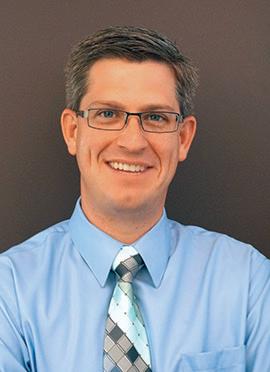



Dorothy Alling Memorial Library hours:
Monday and Wednesday: 10 a.m.-8 p.m.
Tuesday, Thursday, Friday: 10 a.m.-6 p.m.
Saturday: 10 a.m.- 1 p.m.
Visit www.damlvt.org to apply for a library card and register for programs. Need help? Call 878-4918 or email daml@damlvt.org.
DOTTIE THE BOOKMOBILE
Visit your favorite library on wheels this summer! Visit damlvt. org for the full Bookmobile schedule.
LIBRARY OF THINGS
Did you know Dorothy Alling has a large collection of games, kits and more you can check out
— our Library of Things? There is even a large format telescope. New this summer: chess pieces and bean bags for the chess table, and a cornhole set up at Village Community Park.
Children in fourth grade and younger must be supervised by someone over 16 years of age.
VINS: COLOR OUR WORLD
Friday, July 18, 1-2 p.m. Stop by the library for a Vermont Institute of Natural Science summer reading presentation on colors and the natural world, and meet live animal ambassadors. Outdoors if weather permits.
SATURDAY STORYTIME
Saturday, July 19, 10:30-11 a.m. Start your weekend off with Cindy’s Storytime.
GREEN MOUNTAIN CHAMBER MUSIC FESTIVAL FAMILY CONCERT
Monday, July 21, 11:15-11:45 a.m. Enjoy this pop-up concert with student string quartets. After



performing music, they will show their instruments and answer questions. Geared toward families and children.
STORYTIME
Tuesdays, July 8 and 15; July 22 and 29, 10:30-11 a.m. Have fun with Bella’s storytime. Outdoors when weather permits.
KID CRAFTERNOON: TISSUE PAPER PAINTING
Wednesday, July 23, 4:30-5:30 p.m. Use “bleeding” tissue paper to make a unique bookmark or card.
MUSIC AND PLAYTIME
Thursdays, July 24 and 31, 10:30-11:30 a.m. Enjoy Linda Bassick’s preschool music, and stay to play. Outdoors when weather permits.
LEGO TIME
Thursday, July 24, 3-4 p.m. Build something exciting with the library’s LEGO collection.
BABY TIME
Wednesday, July 30, 10:30-11
a.m. Ages 0-18 months. Drop in for gentle bonding and socializing activities with your little one.
TEEN NIGHT: SQUEEGEE PAINTING
Wednesday, July 30, 5-6 p.m. Ages 12-18. Get creative and colorful with canvas, paint and squeegees to make unique art. No artistic skills required.
THE VERMONT SUITCASE COMPANY: “THE DUKE IS DEAD”
Monday, July 21, 5:30-6:30 p.m. Come untangle the mystery with this family friendly, puppet-heavy, hourlong Vermont Suitcase production. On the Town Green if weather permits. Rain location: Library Community Room.
SUMMER READING CHALLENGE: COLOR OUR WORLD
June 14-Aug. 10. Williston and St. George residents only. All ages. Visit www.damlvt.org for details on registering for a summer reading challenge. Track your reading throughout the summer and earn raffle tickets and various prizes. Help us reach our community goal of 10,000 hours read in Williston and St. George this summer.
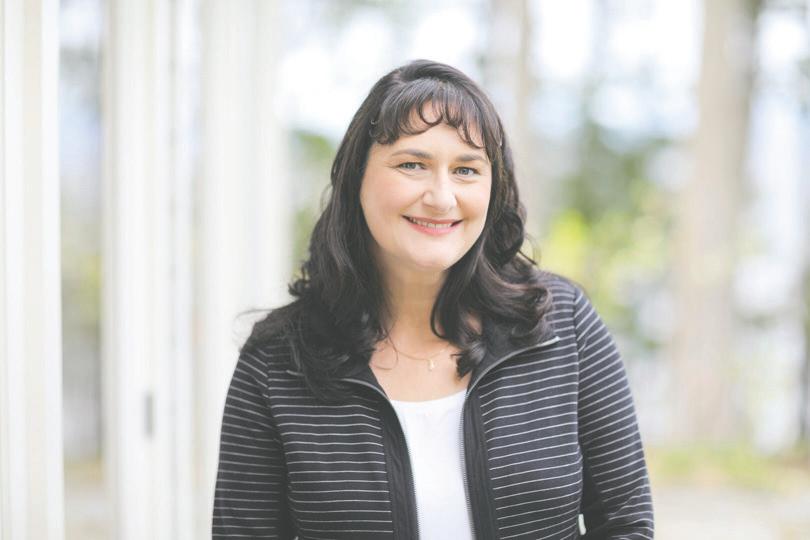



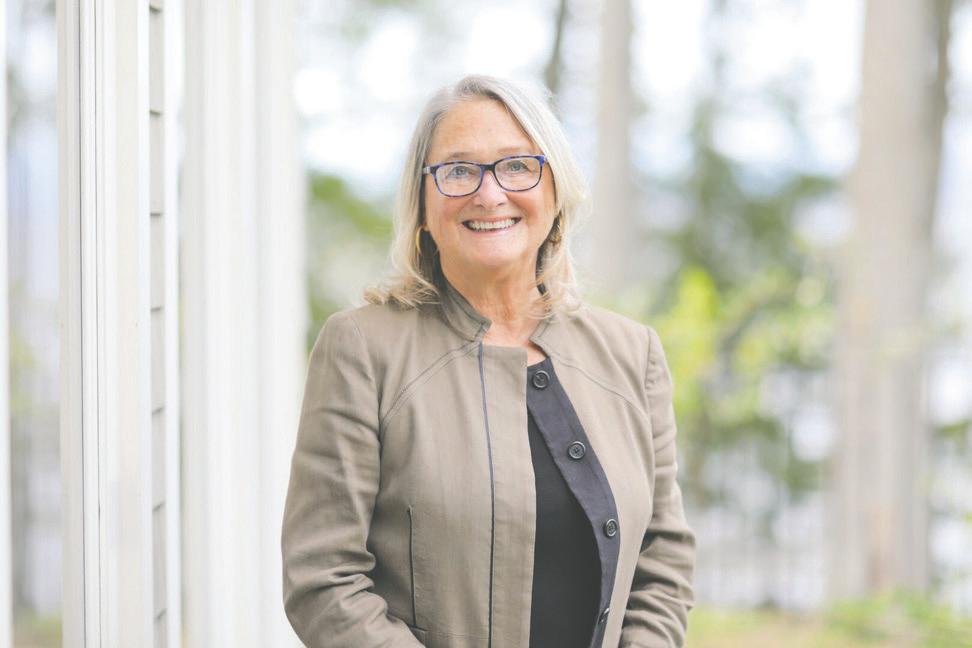

For online programs or to join a book club, email daml@damlvt.org.
ADULT MEDITATION (ONLINE)
Fridays, July 18 and 25, 1212:30 p.m. Join our guided meditation to relax and recenter.
GREEN MOUNTAIN CHAMBER MUSIC FESTIVAL: QUARTET CONVERSATIONS
Friday, July 18, 1-2 p.m. Drop in at the Old Brick Church for this interactive exploration of the string quartet literature via lecture and live performance by GMCMF students.
MAH JONGG
Fridays, July 18, 1-3 p.m. All abilities welcome.
READER’S ROUNDTABLE
Tuesday, July 22, 12:30-1:30 p.m. “The Fox Wife” by Yangtse Choo.
CURRENT EVENTS (HYBRID)
Wednesday, July 23, 10:30 a.m.-12 p.m. Drop in to talk with community members about timely topics.





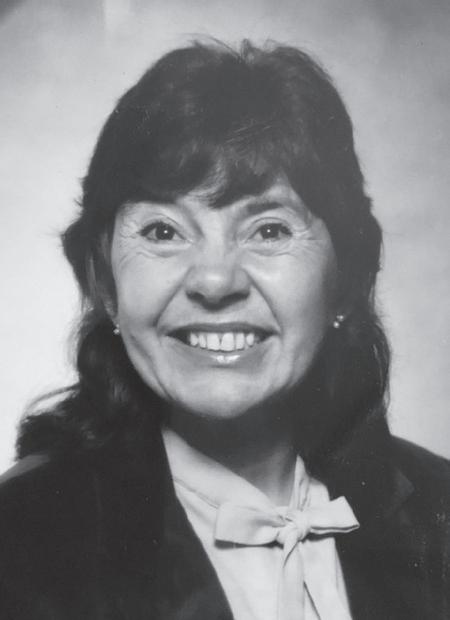
Jane Packard Bryant died peacefully in her home, on June 19, surrounded by family. She was 92 years old.
She was born Jane Salome Bill in Hanover, NH on November, 2nd, 1932. Her parents, Jenny and Moses Bill, owned a small dairy farm on Moose Mountain in East Hanover. Her grade school education in a one room schoolhouse was interrupted at age 11, when she chased a work horse out of the family’s Victory Garden and got kicked over the fence. With her right leg shattered, she was brought for treatment to Mary Hitchcock Hospital, where she was among the first in NH’s civilian population to receive penicillin, which saved her leg.
The experience of an averted amputation, and the year-long
hospital recuperation that followed, inspired in her a deep respect, appreciation, and interest in the field of medicine. This shaped her entire life.
Dubbed “Jane the Brain” at Hanover High School, she continued on after graduation to attend Hartford Hospital School of Nursing in CT, earning her degree in 1953. In that same year, she married Dr. Artemas John Wise Packard, and they had five children together, eventually moving to a farmhouse in Williston, VT — the same house in which she died 61 years later.
Upon divorce, Jane raised all five daughters. During this time, she worked at the DeGoesbriand Hospital (UVMMC), organized Girl Scouting in Williston, and was president of the PTA. As her children aged, her career expanded. Taking a job at the Visiting Nurse Association in 1968, she traveled throughout Chittenden and Grand Isle counties, ministering to patients at all hours of the day and night. Simultaneously, she spent weekends in Boston to become certified as the first Pediatric Nurse Practitioner in the state of Vermont.
She launched the Winooski Valley Family Health Clinic, under the Model Cities initiative, serving poor and under-privileged children and families. Over the next 27 years, she applied her nursing skills as a Home Care and Maternal Health nurse, a
school nurse, summer camp nurse, and lastly as a Hospice nurse for the Visiting Nurse Association. She ran Well-Child Clinics for the Vermont State Health Department and contributed to several local and state advisory committees, including the Vermont State Daycare Standards Advisory Committee, the Chittenden County Child Protection Team, and the Greater Burlington Child Abuse Team.
Her gifts of empathy, humility, humor, her joie de vivre, and deep compassion were all in play when caring for her patients. This commitment to public health, as well as to issues of social equality, educational access, and protecting the environment inspired her to make a diligent but unsuccessful run for state legislative office in the mid 1980’s.
In 1989, Jane married the love of her life, Cyrus Bryant. Their shared love of music, physics, and being active in the great outdoors brought them many years of adventures, explorations, and immeasurable happiness.
Jane was never one to sit still and always wanted to grow and learn! She explored alternative and traditional healing modalities; her interest in holistic approaches led her to become a Certified Healing Touch Practitioner and she had her own practice for several years.
She was a poet, a dowser, an environmentalist, and enjoyed hiking and skiing. She attended contra dances regularly, took classes in clogging, and became a belly dancer. Her professional and recreational interests took her to 3 continents - places she could only dream of as a little girl on Moose Mountain! She loved science, and was always interested in the latest developments in Physics and in Cosmology.
Her life was always accompanied by music, and her tastes were expansive. She enjoyed playing piano, guitar, and clawhammer banjo, and, of course, singing. She loved to both make music and listen to it, but paramount was the sharing of it. She was a member of both the Burlington and Lamoille Choral Societies, as well as the Vermont Mahler Festival.
Jane joined the First Unitarian Universalist Society of Burlington in 1959, and served as Religious Education Director, participated in numerous committees, and sang in the choir for over 45 years. She was also instrumental in the design and implementation of the labyrinth on the church grounds.
When Jane walked into a room, everybody knew it! Her energy and smile would infuse any place, any space, any heart.
Surviving in sadness and joy is her soulmate and husband Dr. Cyrus Bryant, physicist,








also children Dr. Sara Packard, Susan Sesera and husband Frank, Deborah Packard and partner Peter Cairney, Nancy Packard, Angela PackardBull and husband Braddock, Weylan (Woody) Bryant and wife Liz, 11 grandchildren, and 12 great-grandchildren, sister Linda Austin and husband Ernest (Red), and brother-inlaw Andrew (Du) Packard and wife Patricia. She was predeceased by her parents, Moses Bill, Sr. and Jenny Abbott Bill, sister Bonnita Carr and husband Lewis, and brothers Moses (Billy) Bill, Jr. and Kenneth Bill and wife Shirley. She will be remembered by many additional family members in the Bill and Packard families, and by those who were touched by her friendship.
Heart filled thanks from each member of Jane’s family go to Dr. Alexandra Messerli, primary care physician, Judy Johnson, RN, and her team from UVM Home Health and Hospice who helped both Jane and her family adapt and navigate the unfolding path to her transition to what lies beyond. A celebration of her life will take place at the First Unitarian Universalist Society of Burlington Oct. 18t, at 1:30 p.m.
In lieu of flowers, donations may be made to Vermont Public Radio, UVM Home, Health and Hospice, Parkinson’s Disease research, or other charity of your choice.

ONLINE AUCTION CLOSES: Sat., JULY 26 @ 1PM
PREVIEW: By Appt. During Business Hours (8AM-4PM), or Fri., July 25 from 11AM-1PM (For Appt. Email: helpdesk@thcauction.com)
LOCATION: 298 James Brown Drive, Williston, VT

Simulcast Auction: This is your opportunity to own a piece of automotive history! From vintage cruisers to iconic sports cars, this auction features a diverse and exciting lineup of classic vehicles. Whether you’re a seasoned collector, enthusiast, or first-time buyer, there’s something here to rev your engine.
THCAuction.com • 802-888-4662
DINING ROOM TABLE & 6
CHAIRS — Opens up from 5ft to 8ft with 3 leaves. Table completely refinished.
Asking $575. 802-878-9104
TITAN CAPSPRAY 95 HVLT PAINT SPRAYER — Used only 5 hrs. Paid $1500. Asking $1150. 802-878-9104
FACTORY-MADE WORKBENCH
54” W x 23” D x 60” H. Has 2 pullout drawers. Asking $95. 802-878-9104
EMAILED ADVERTISEMENT

Email: Advertising@THCAuction.com
May 18 at 4:32 a.m. — Assisted Williston Fire with structure fire on South Road.
To: Rick & Susan Cote Paper: Williston Observer Max Length 12.5
May 18 at 7:53 a.m. — Report of a male who attempted to hit another male with his car at Home2Suites. A warrant was issued for the male for aggravated assault, disorderly conduct, hate motivated crime and negligent operation.
TODAY’S DATE: 07/09/2025
May 18 at 3:19 p.m. — Male used counterfeit money at Get Air. Male was referred to the Williston Community Justice Center.
To place a classified ad, email rick@williston observer.com or call 802-373-2136 Deadline for classifieds is Monday.

fraudulent checks using a business account on Leroy Road. Male was issued a citation to appear in court for uttering a forged instrument and false pretenses.
May 20 at 8:51 a.m. — VIN verification conducted.
May 20 at 11:04 p.m. — Stolen trailer recovered in Shaw’s parking lot. Returned to Home Depot.
NAME OF FILE: 07172025_WO DATE(S) TO RUN: 07/17/2025
SIZE OF AD: 1/16 page (2” x 5”)
May 18 at 5:27 p.m. — Retail theft reported at Home Depot. Male suspect was located and issued a citation to appear in court for retail theft.
May 21 at 1:19 p.m. — Report of a retail theft at Home Depot. Male was located and issued a citation to appear in court for retail theft.
EMAILED TO: Rick@Willistonobserver.com
Publishes in Williston Observer
May 19 at 4:59 a.m. — Assisted Williston Rescue with an unresponsive female. She was transported to the hospital for evaluation.
SECTION: Auctions PO# 1675
May 19 at 9:14 a.m. — Report of an intoxicated male at Walmart causing a disturbance. Male left without issue.
May 19 at 9:50 a.m. — Male writing
May 21 at 6:24 p.m. — Assisted with a male who showed up at his place of employment intoxicated. Male was transported to the correctional facility for detox.
May 22 at 12:14 p.m. — Retail theft reported at Dick’s Sporting Goods. Male suspect was located and issued a citation to appear in court for retail theft, possession of stolen property and unlawful trespass.
May 22 at 7:43 p.m. — Male causing a disturbance at Shaw’s. He was located and issued a notice of trespass.
May 23 at 2:36 p.m. — Retail theft reported at Hannaford. Male suspect was located and issued a citation to appear in court for retail theft and unlawful trespass.
May 23 at 8:15 p.m. — Report of a truck parked at the fuel pumps on Marshall Avenue for three days. Truck was unoccupied but had permission to park there.
May 24 at 12:37 p.m. — Retail theft reported at Walmart. Male was located and issued a citation to appear in court for retail theft.
May 24 at 7:43 p.m. — Retail theft reported at Dick’s Sporting Goods. Female was referred to the Williston Community Justice Center.
May 24 at 7:53 p.m. — Same male who stole from Walmart earlier in the day stole again from Walmart. He was located and issued a citation to appear in court for retail theft and unlawful trespass.
Officers also conducted 20 traffic stops and responded to three alarm activations and eight motor vehicle crashes during this time frame.


bittnerantiques.com




















The following column first appeared in the Dec. 28, 2000 issue of the Williston Whistle and was reprinted in the February 8, 2001 issue along with a response, right.
BY HOLLY HAVEN GUERREIRO
I was tired as I pulled into the high school lot to pick up my daughter from yet another after-school activity. Christmas carols chimed gaily from the radio, but I was immune to their message.
At home, holiday chores were piling up. There were Christmas cards to be written, countless gifts to wrap, and or course, dinner to be made. As I waited impatiently, snowflakes began to filter steadily down, and I longed to cuddle up safely in front of my own fireplace.
After wat seemed like hours, my daughter appeared with three

friends in tow. She popped her head into the van and whispered frantically, “Mom, can you give my friends a ride home? Ashlee’s mom had to work late and she was supposed to take Shannon home too. And you know how Hannah’s dad is ... she really needs a ride.”
Resentment reared up in my me. Carting these girls all over town was not how I had planned to spend my evening. They didn’t even live close by, and they weren’t my responsibility. I fumed inwardly, while glowering at my daughter’s expectant face.
From around the door, Hannah’s pale face appeared, hesitant and uncertain as she searched my eyes for an answer. In that moment, the years rolled away and I saw myself at her age.
For years my mom was sick with cancer, and I never had a reliable ride. After she was gone, it was even worse. My dad struggled to work and keep a roof over our heads, but three lonely miles
separated our rural home from the village of Richmond. When the activity bus dropped us off at the center of town, we still had a long cold walk ahead of us. And, yes, it was all uphill!
But sometimes in a small town wondrous things happen, and through the simplest acts we change the world forever. My story has a happy ending because there was an angel in our little town.
Her name was Mrs. Thornton and she lived just across the green and down the lane from the Old Round Church. She didn’t have a halo or wings. In fact, she drove a tiny, road-weary Fiat.
This unlikely angel gave me countless rides with never a word of complaint. I remember once she volunteered to drive me 32 miles round-trip from field hockey practice at the high school to pick up something I had forgotten at home.
Mrs. Thornton was not a

wealthy philanthropist or a retiree with empty hours to fill. In fact, she had her own big family of lively, red-headed kids who would have been a challenge for any mother to keep up with. They were involved in loads of activities that kept her on the road constantly, but I never heard her complain. She had a tiny car, but there always seemed to be room for just one more.
I’m not sure if I thanked Mrs. Thornton. Kids tend to forget things like that. I left that little Vermont town many years ago, and I have no idea what has become of my angel, but I’ve never forgotten her selfless gift to me.
If you’re still out there, Mrs. Thornton, I want you to know that I gladly gave the girls a ride that night – and I’ll do it again and again and again. And whenever they’ll listen, I’ll tell them the story of my angel in a Fiat and let them know that the ride is really on you!
The Fiat is gone, but not the angel
Dear Holly,
When I walked into church recently, everyone said I was famous. They showed me your article.
I am still around! I don’t give many rides anymore because the kids – red-headed and otherwise – are grown and I am no longer in the right place at the right time. I miss all of you! The old yellow Fiat is gone too, but I still have a yellow car. You can consider me amply thanked. I’m surprised you still remember.
The heart-warming thank you is even more special because you passed it on. This is what will make the world a better place. Hopefully, someday the kids you help will also pass it on.
Love, Mrs. (Paula) Thornton Richmond
